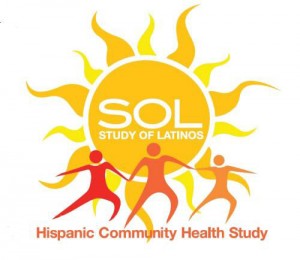
Latinos are the largest minority group in the United States. In the Bronx, they are the majority group, making up roughly 53 percent of the population. And this group is highly diverse: people with personal or family roots in the Spanish-speaking regions of Latin America and the Caribbean, including Puerto Rico, the Dominican Republic, Mexico, Honduras and Ecuador. Incredibly, there has never before been a major nationwide effort to study the health of the Latino population. Until now.
Albert Einstein College of Medicine is one of just four medical schools in the United States conducting a landmark multiyear, multi-million-dollar study of Latinos—the Hispanic Community Health Study/Study of Latinos, known as “SOL.” Funded by the National Institutes of Health, SOL is a long-term project that will take more than a decade to complete. It has just passed its first-phase milestone and the study’s initial findings are being published today in the Journal of the American Medical Association.
To date, we have found that:
- Heart disease and stroke risks are widespread in the Latino community
We studied five major risk factors that may lead to early heart attack, stroke or other diseases of blood vessels: high blood pressure, high cholesterol, diabetes, smoking and obesity. Einstein’s SOL study showed that almost everyone in the Latino community is at possible risk—8 out of every 10 men, and 7 out of every 10 women, have one or more of these unhealthy factors that may cause early heart disease or stroke.
- Health risks vary between different subgroups of the U.S. Latino population
For example, compared with Latinos born in the 50 states, recent immigrants to the Bronx tend to have healthier levels of blood pressure, cholesterol and body weight, and appear less likely to suffer from diabetes and high blood pressure. But the health advantages of those born in Central or South America or the Caribbean disappear in subsequent generations born in the United States.
- Common threads exist among the diverse Latino groups
Aspects that tend to be shared by many Hispanic groups in the United States include close familial and community bonds, as well as strong ties to their regions of ancestry outside the country. Traditional Latin American foods and eating habits are often preserved, even in families that have been in the United States for generations. In our study, we are beginning to understand the aspects of culture, community and health-related behaviors that may promote good health among Latinos—and that might be adopted by others both within and outside the Latino community.
The process of learning about the community’s habits has involved knocking on doors—20,000 of them! Over the past several years, our Einstein SOL research team has done a lot more than just collect data. It has been on the front line, connecting with community volunteers who, by being part of the study, are helping us discover reasons why some Latinos get diseases at an early age while others enjoy lifelong excellent health. We wanted those who participated in this study to feel they had a stake not only in monitoring their own health issues but in helping us learn about the Latino community overall.
The response has been terrific. Since the study began in 2008, 4,118 Bronx Latinos have signed up. Each of the men and women has attended a full-day examination at our medical clinic. They have answered detailed questions about what they eat, their smoking and drinking habits and how often they walk, jog or participate in sports and other forms of health-promoting exercise.
They have also undergone comprehensive medical exams of their hearts, blood vessels, lungs, kidneys, sleep quality, dental health and breathing problems. They have shared their day-to-day stresses such as unemployment, inadequate healthcare and money problems, along with elements that improve their quality of life, such as church, friends, family and community. In the future, the study will attempt to figure out why there are regional and generational health disparities. We will also work with those in our study to create a long-term picture of Latino health that shows not just the risks but the possible advantages experienced by the community.
With many years left to go in the study, we’re hoping to learn a lot more from our tremendous group of volunteers who have stuck with us. So, if you have participated in the NIH Study of Latinos (SOL), or know a friend or family member who has participated, remember that each of our SOL participants deserves a hug and a thank-you for helping us to better understand the health of our community.

